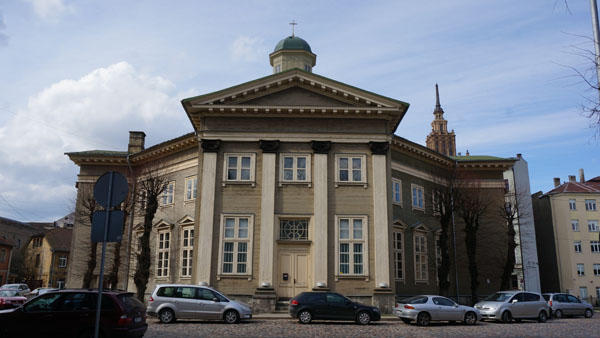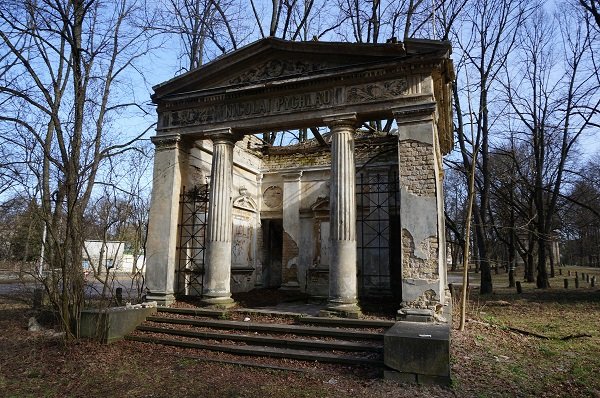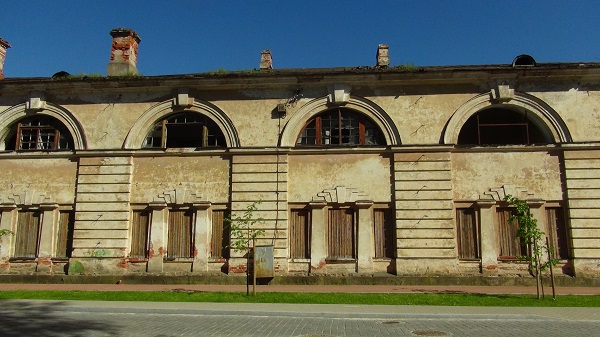Neo-Classical architecture imitates the architecture of ancient Rome and ancient Greece. The style was popular in Latvia ~1750-1850 and the streets still have more Neo-Classical buildings than buildings constructed according to any earlier style. Neo-classical was even adopted for wooden buildings.

Classical temples of Roman and Greek gods were among the main inspirations, and many buildings thus had Classical columns, pediments, and Ancient symmetry.

Even though it is an imitation of ancient Rome and Greece, Neo-Classical has more elaborate facades than were possible during Classical Antiquity; the most elaborate Neo-Classical buildings are known as Empire style, which have added sculptures.
It should be noted that back in real Antiquity only the major public buildings and those of the rich had any decorations at all, while such buildings as apartment blocks were very simple. In Latvia of the 1750s and 1850s however, every urban building was expected to be built to the levels of ancient temples rather than ancient buildings of the same purpose.

Neo-Classical interiors were, however, more austere than most earlier interiors. Even palaces and churches often had all-white interiors with relatively few decorations, just as the Ancient Roman buildings that inspired them (this was a misconception, however, as in reality, Ancient buildings had colorful interiors, just that the colors were destroyed by time).
The most visible legacy of Neo-Classicism in Latvia is however not the buildings themselves but the changes in urban planning. The cities and districts built before 19th century typically consist of many labyrinthine narrow streets that lead to some larger squares. Neo-Classical cities (e.g. Daugavpils and Riga Centrs), on the other hand, are based on straight rather wide streets, forming rectangular blocks filled with buildings. This was the same urban planning as in the Roman Empire, and even where the Neo-classical buildings themselves have been destroyed by subsequent wars and occupations (e.g. Daugavpils), the Neo-classical street grid remained intact.

As the time progressed, people of Latvia started to grow fond of all the previous styles rather than just Neo-classical. As such, Neo-classical was reduced from the majority style to an exception for new buildings by the mid-19th century.
